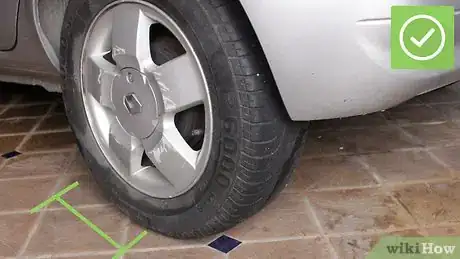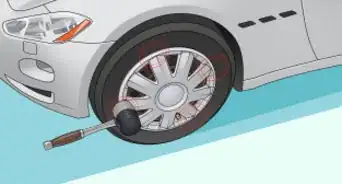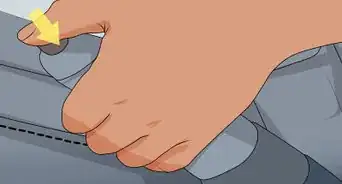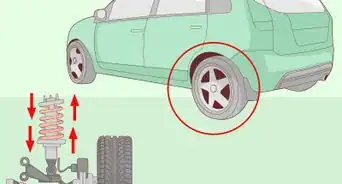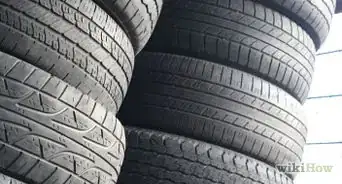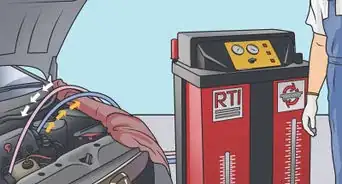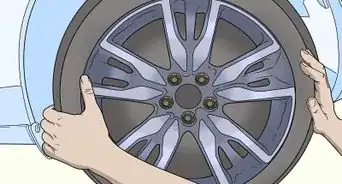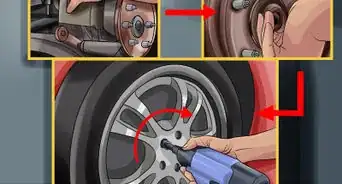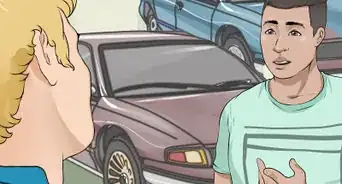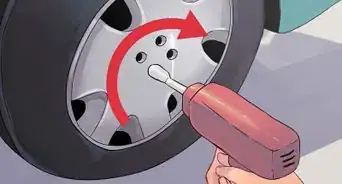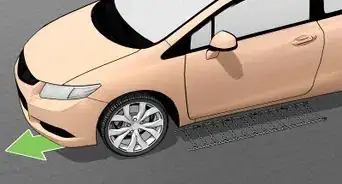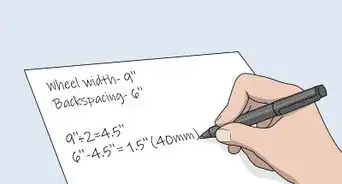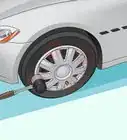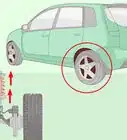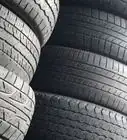This article was co-authored by Andrew Quinn and by wikiHow staff writer, Eric McClure. Andrew Quinn is a Master Mechanic in Kansas City, Missouri. He is ASE (Automotive Service Excellence) certified and has over 9 years of experience working with companies such as Valvoline, Instant Oil Change, National Tire & Battery, and Tires Plus.
There are 7 references cited in this article, which can be found at the bottom of the page.
wikiHow marks an article as reader-approved once it receives enough positive feedback. In this case, 87% of readers who voted found the article helpful, earning it our reader-approved status.
This article has been viewed 2,339,320 times.
You walk out to your car after a long day at work, ready to go home and relax...only to discover you have a flat. As annoyed as you might be, rest assured that this will be an easy job to tackle. While replacing a flat with a spare tire may seem daunting if you’ve never done it before, believe us when we say it’s not that complicated. In this article, we’ll walk you through everything you need to do to get back on the road.
Things You Should Know
- Park in a safe, flat area. Put your hazards and parking brakes on.
- Loosen the lug nuts with the tire iron in your trunk then raise the vehicle in the air with the jack.
- Once the vehicle is in the air, remove the nuts entirely and put the spare on.
- Tighten the nuts by hand before lowering the vehicle and tightening them fully.
Steps
References
- ↑ https://www.kbb.com/car-advice/how-to-change-a-tire/
- ↑ https://www.popularmechanics.com/cars/how-to/a5855/how-to-change-a-flat-tire/
- ↑ https://www.consumerreports.org/tires/some-newer-cars-are-missing-a-spare-tire-a9928775934/
- ↑ https://www.caranddriver.com/features/a26012411/how-to-change-tire/
- ↑ https://www.popularmechanics.com/cars/how-to/a5855/how-to-change-a-flat-tire/
- ↑ https://techinfo.honda.com/rjanisis/pubs/OM/PR9191/PR9191O00119A.pdf
- ↑ https://www.caranddriver.com/features/a26012411/how-to-change-tire/
- ↑ https://www.popularmechanics.com/cars/how-to/a5855/how-to-change-a-flat-tire/
- ↑ https://www.kbb.com/car-advice/how-to-change-a-tire/
About This Article
To change a tire, first chock a wheel on the opposite end of the car that you’ll be working on. You can use a piece of wood or a rock if you don’t have a wheel chock. Chocking the wheel will prevent the car from rolling when you jack it up. Next, remove the lug nut cover on the tire you’re changing if there is one, and use a lug wrench to loosen all of the lug nuts on the tire. Now, locate the jack point underneath the car next to the wheel you’re changing and position a car jack under it. Crank the jack until the tire you’re working on is lifted off the ground. Then, remove the loosened lug nuts from the tire, and use your hands to pull the tire off. Align the holes on the new tire with the studs on the hub, then push the new tire into place. Put the lug nuts back on using the lug wrench, and lower the car back down to the ground using the jack. Finally, tighten all of the lug nuts with the lug wrench in a crisscross pattern so they’re as tight as possible. To learn more from our Mechanic co-author, like how to store the old tire so you can get it inspected, keep reading the article!
